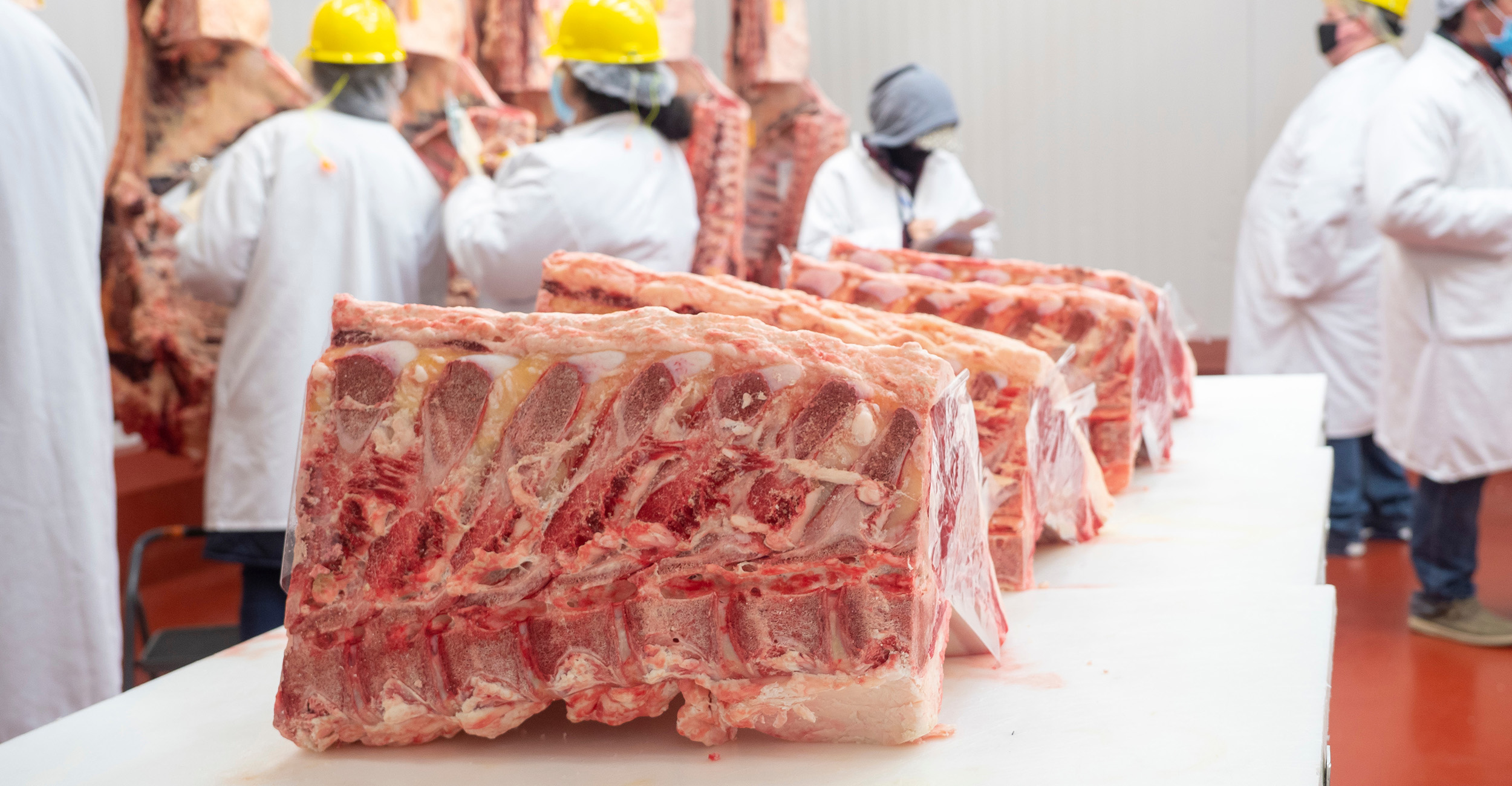
OSU researchers look at meat plants post-pandemic
Friday, May 21, 2021
Media Contact: Brian Brus | Agricultural Communications Services | 405-744-6792 | BBrus@okstate.edu
When consumers noticed a reduction in meat products in grocery stores at the beginning of the pandemic, some took matters into their own hands, working with producers directly to arrange for meat processing.
An ongoing decline in small meat plants had already led to processing wait times of about nine months pre-COVID 19. In slaughterhouses across Oklahoma, many customers are being told now they’ll get their livestock processed in more than a year, said Rodney Holcomb, agribusiness economist for Oklahoma State University's Robert M. Kerr Food and Agricultural Products Center.
In a recently released study, Holcomb and Courtney Bir — assistant professor in the Department of Agricultural Economics and Oklahoma State University Extension specialist — took a closer look at how COVID-19 forced meat processing plant shutdowns, increasing concerns in the current processing system. They evaluated the financial support and potential for an increase in small-scale processing.
Now that the grocery supply chain has proven its stability, the question is whether consumers will maintain their interest in smaller processing plant.
“COVID-19 was a unique experience that raised concerns about our food supply chains. I’ve been impressed at how those systems adjusted,” Bir said. “However, the economy is also bouncing back, and we have to consider whether those adjustments can be sustainable beyond the crisis.”
The equation involves more than just producers and consumers. For example, there must be enough government inspectors to ensure plants are safe to operate, and that pool of jobs has been tight for several years. Also, economies of scale that are so attractive to large operations — shipping less-desirable cuts out of the country, for example — are difficult for small businesses to attain.
“What’s becoming clear is that just because we like the idea of self-sufficiency doesn’t make all the other hurdles go away,” Bir said.
In response to increased market demand in the pandemic, the state Department of Agriculture, Food and Forestry received about $10 million through the federal CARES Act Coronavirus Relief Fund to decrease Oklahoma’s dependence on outside processing plants and mitigate the consequences of processing plant shutdowns.
The grant funds had to be used by the end of 2020 to expand current facilities or build new processing plants. By the last quarter of the year, 36 Oklahoma locations were awarded grant money.
But the demand for meat-processing expansion and availability went far beyond even that money. Danny Bass of Bass Butcher Shop in Felt, Oklahoma, was among those who stepped up. The small meat processing plant operator takes pride in meeting customer needs, providing any cut desired from the carcass. He confirmed demand has been high, as Bir and Holcomb’s research found.
“We opened our doors in October 2020 with the idea we would mostly be serving local people from the Oklahoma Panhandle,” Bass said. “Right now, we’re booked until September. We’ve got Oklahoma clients as far east as Perry in the north-central part of the state, and folks in the Texas Panhandle, New Mexico and Colorado.”
Another small meat processing plant is setting up shop in Cimarron County as well, said Justin Wagner, Cimarron County Extension director and agricultural educator. Wagner worked as a U.S. Department of Agriculture meat inspector for three years before joining OSU Extension. He agreed the pandemic has played a significant role in spurring the growth of small meat processing plants because people have been worried about the security of their food supplies.
“In rural areas, it’s long been a common practice for people to buy a live cow from their agricultural neighbors — beef on the hoof — and then pay to have the animal processed when the rancher takes it in to be harvested,” Wagner said. “Interest in taking advantage of this type of direct marketing has been expanding, to the benefit of all involved. The consumer gets meat at a lower price, and often more cuts of meat than expected; business is booming for the small processor; and the mostly rural communities in which these businesses are located are experiencing economic growth.”
Holcomb said it’s difficult to project what the meat processing market is going to look like after COVID-19 because the situation involves so many other factors that were in play pre-pandemic and are still developing.
“For example, with growth in the local food movement, it’s become very difficult for anyone raising livestock to get those animals processed in Oklahoma,” he said. “And some of the tribal nations started building their own packing plants, too. All the impacts are yet to be really understood.”
